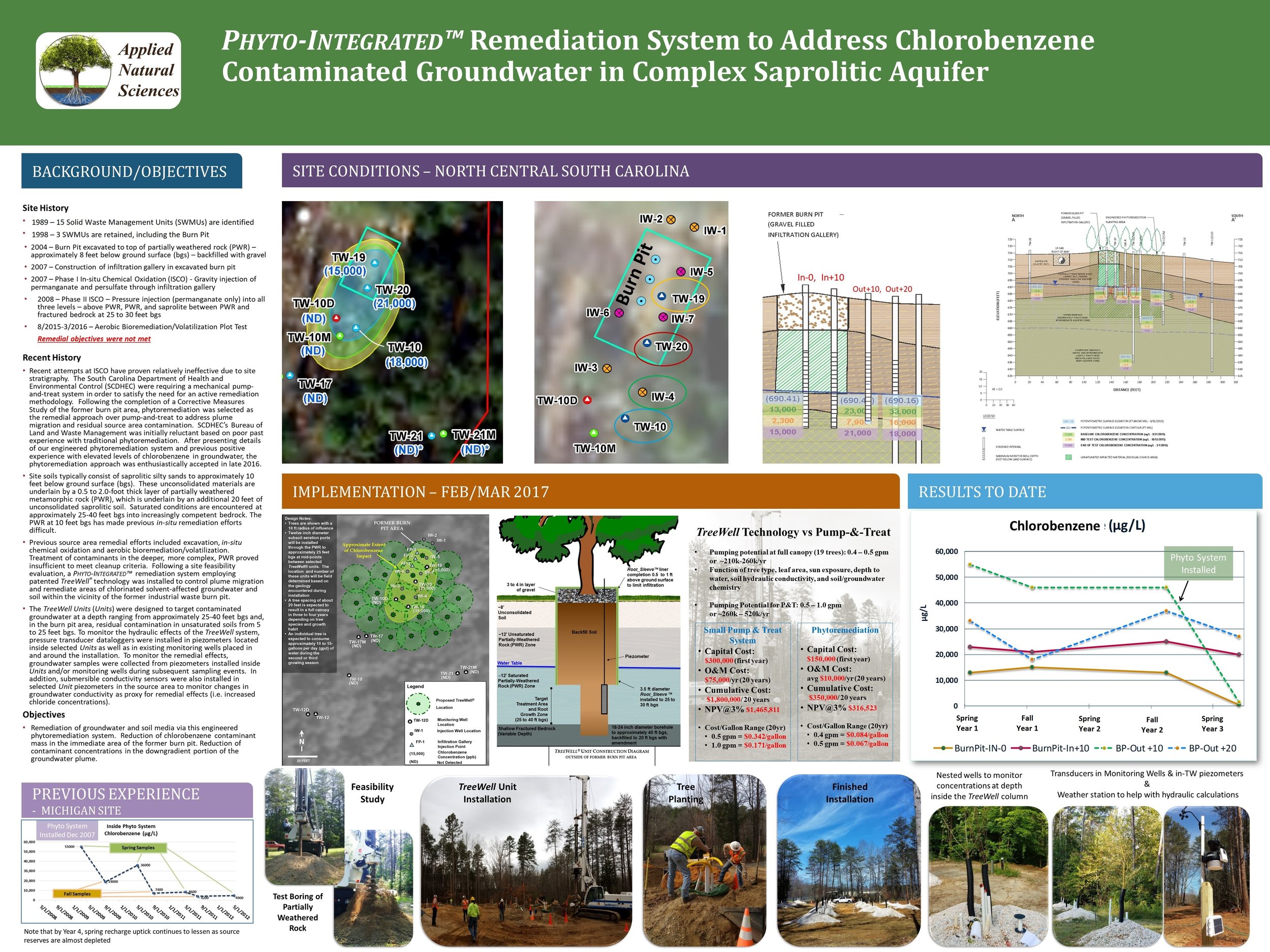
Is there a nature-based, cost-effective solution for your PFAS problems?
At Applied Natural Sciences, we are working with our clients and partners in pushing PFAS remediation alternatives forward by developing an understanding of PFAS fate and transport within our TreeWell® systems, including within tree tissue.
Pushing PFAS Research Forward
Our scientists are actively working with global clients and consultants to gain a better understanding of the fate and transport of PFAS in vegetation.
Current Pilot: Michigan State-funded Site
TreeWell units were installed at an orphan site in conjunction with Michigan Department of Environment, Great Lakes, and Energy (EGLE). This location had been a tannery, which ceased operations in 1952. However, results of soil and groundwater samples collected 65 years later indicated the presence of PFAS.
Data from this site will provide insights into PFAS transport and fate within tree tissue.
Addressing New Problems with Time-tested Strategies
For the past 30 years, we have been refining our unique form of engineered phytoremediation, addressing contaminants such as chlorinated solvents, and we have volumes of data demonstrating effective degradation within our TreeWell systems. Our nature-based solutions have successfully replaced multiple mechanical remedial systems and allowed sites to secure regulatory closure, resulting in substantial remedial life cycle cost savings for our clients.
We are proud to be on the cutting edge of research focused on PFAS fate and transport as our TreeWell units draw PFAS-contaminated water into the soil column where it is subject to microbial degradation and uptake by the tree.
Upcoming Pilot: New Hampshire Superfund
Our patented TreeWell Technology has been written into the Record of Decision (ROD) for The New Hampshire Plating Company superfund project currently in the planning phase.
TreeWell units will be installed along the southern and southeastern boundaries of the 13-acre site to supplement sequestration and/or remediation of chlorinated volatile organic compounds (cVOCs), per- and polyfluoroalkyl substances (PFAS), and 1,4-dioxane in the upper hydrostratigraphic unit.
Considering remediation alternatives for a PFAS project?
-
Let's discuss TreeWell® technology's feasibility for your site.
Speak with one of our experienced scientists about a current or potential project.

Learn about our pioneering experience
At Applied Natural Sciences, we are committed to meeting our clients’ unique remedial challenges. As pioneers in our field, we have been applying agronomic processes to environmental remediation problems of soil and water for decades.
How do TreeWell® units work?
• Trees operate as a pump—contaminated groundwater is drawn upward towards roots, while roots are encouraged to grow downward towards contaminated groundwater
• Our specially designed Root_Sleeve™ liner acts as a well casing to exclude surface/non-targeted groundwater and encourage tree pumping from the targeted depth
• TreeWell unit acts as a bioreactor—microbes degrade contaminants before contact with roots
• Residual contaminants are treated within the tree and/or transpired and photo-oxidized within the atmosphere





